Garage Minder Project Details
Problem:
Have you ever wondered if you closed the garage door when you left home? Or even worse, arrive home from errands to find that you left the garage door wide open. We need a way to get alerts when the garage door is left open too long and better yet, a way to close the garage from the other side of the internet.
Solution Concept:
Create an DIY IOT Garage Door Minder that monitors the garage and allows me to close the door remotely.
Features:
- 1 Minder – 2 Devices What??
- First device monitors the garage door and reports status changes.
- Second device listens for a command to close the garage door. Alarm will sound to warn that the door is about to close.
- WiFi based wireless data link to monitor the garage door.
- Battery backed up monitor works for hours even if home mains power is lost.
- Initial ideas that were rejected along the way include: Temp.Sensor.
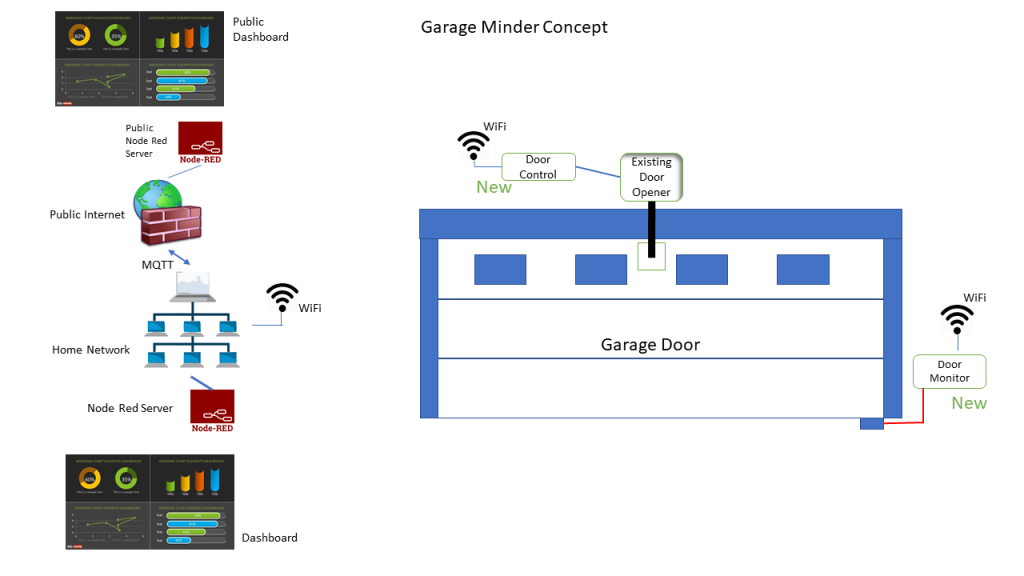
First Device: Garage Door Monitor
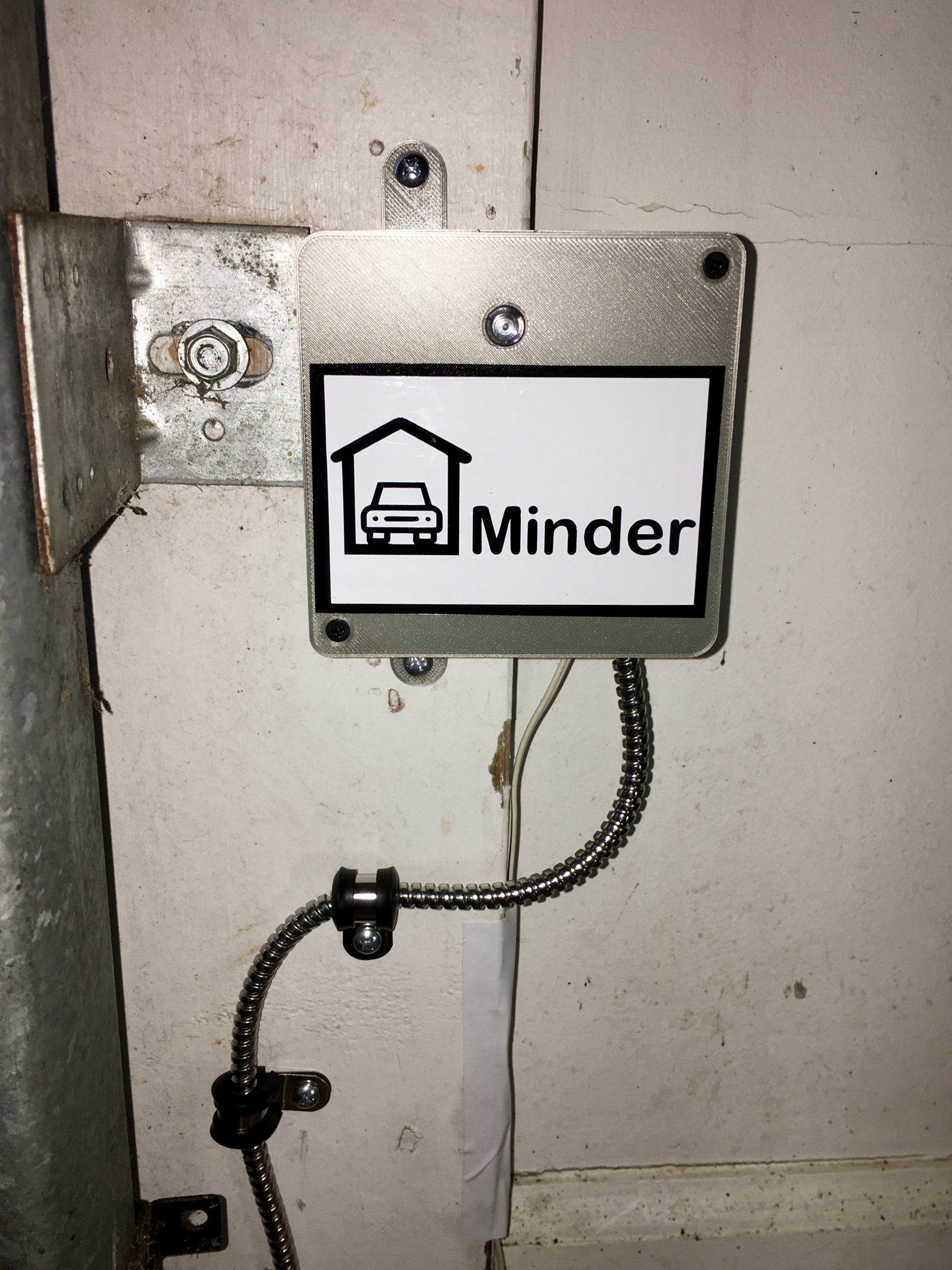
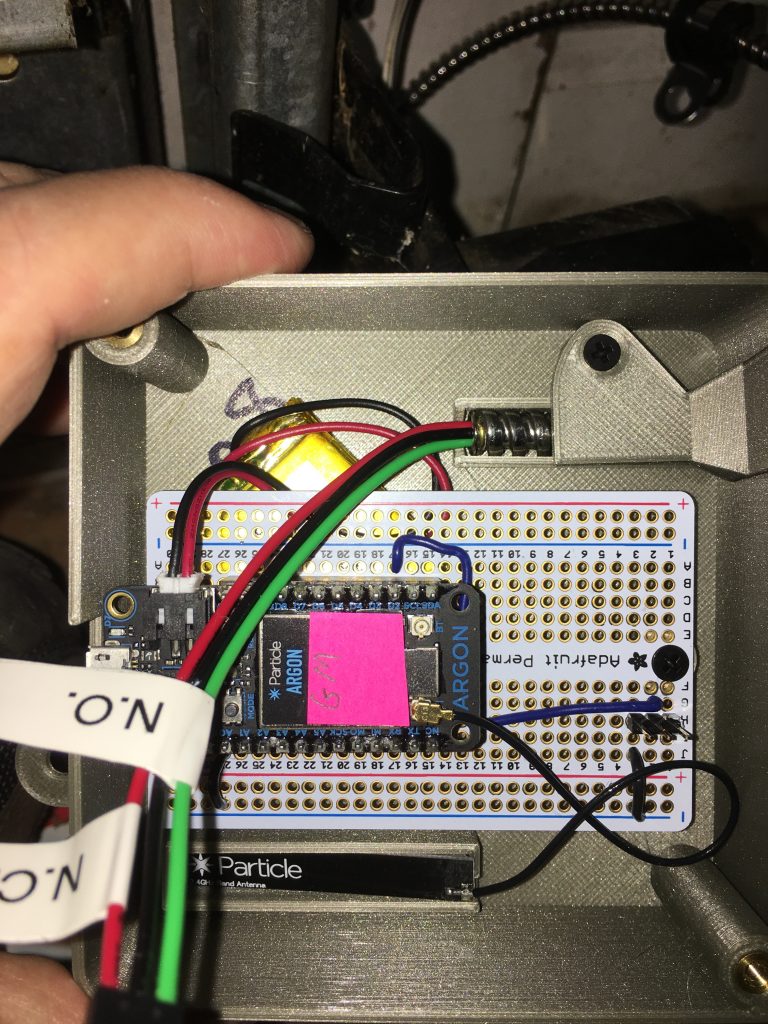
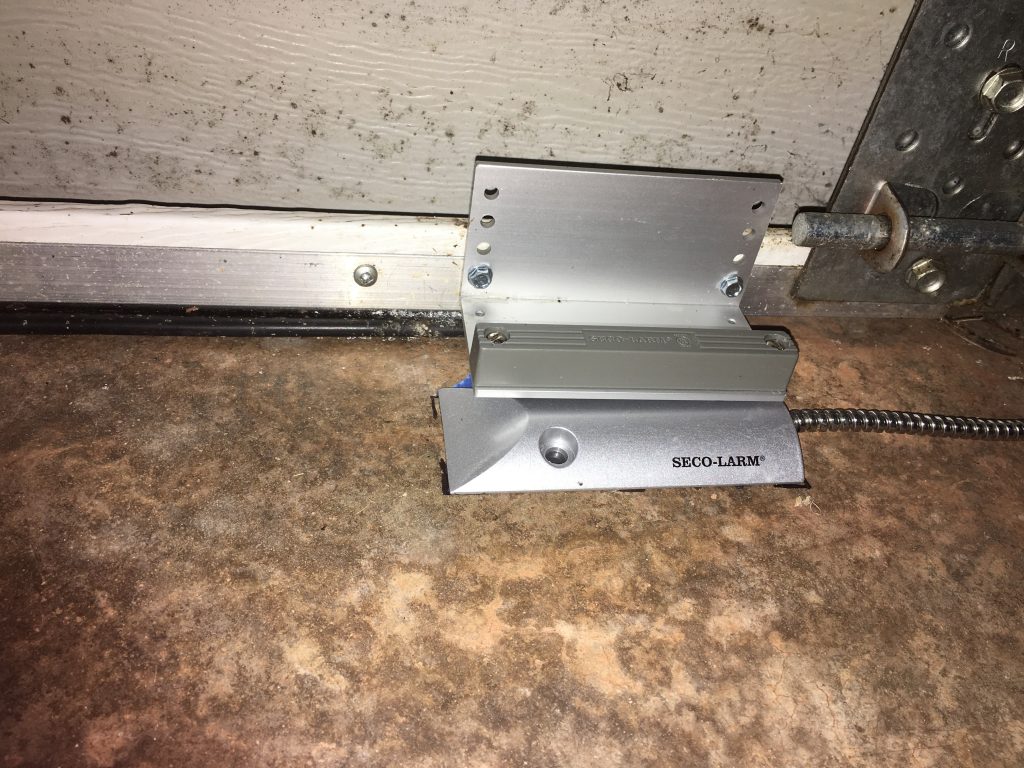
Door Monitor
Electronics:
For this project, I chose the Particle Argon which is their 3rd Gen WiFi micro-controller based on the Nordic nRF52840 micro-controller.
The circuitry was extremely simple. I simply monitor one GPIO connected to a reed switch door sensor.
The garage door senor I used was the Seco-Larm SM-226L-3Q. This rugged overhead door sensor allows for Normally Open or Normally Closed applications.
For the PCB, I used one of the Adafruit PermaProto Board.
Also, I 3D printed an enclosure for the electronics. the enclosure incorporates a holder for the shielded goose neck cable from the door sensor as well as a holding slot for the Wifi Antenna. One extra feature that I incorporated into the enclosure top was a clear lens placed directly above the status LED of the Particle Argon. This simple addition allows me to visually check on the status of the micro-controller to determine modes such as normal operation, internet connectivity, status during upgrades, etc.
Second Device: Garage Door Closer Controller
Door Closer Controller Electronics:
The closer controller circuitry is based around a Particle Argon as well, but the PCB I used was the Adafruit Doubler which allowed me to use the Adafruit Non-Latching Mini-Relay Feather Wing as the dry contacts needed to signal closure to the garage door closer.
Again, this device has very simple electronics. The Argon micro-controller uses one GPIO to send a signal to the Mini-Relay board to close the contacts for about 200 ms. Additionally, I used a inexpensive piezo buzzer to produce a warning tone before closing the door. The warning tone gives 7 tones each with a decreasing frequency before closing the contacts to close the garage door. Therefore, a second GPIO pin is used to directly drive the buzzer. This buzzer can support higher voltage, but with some testing I felt like the tones from the buzzer driven at 3.3V were sufficiently loud to alert anyone in the garage.
For security reasons, the logic I built in Node Red only allows the dashboard user to close the garage door. I felt opening the garage door should only be done by someone inside the house.
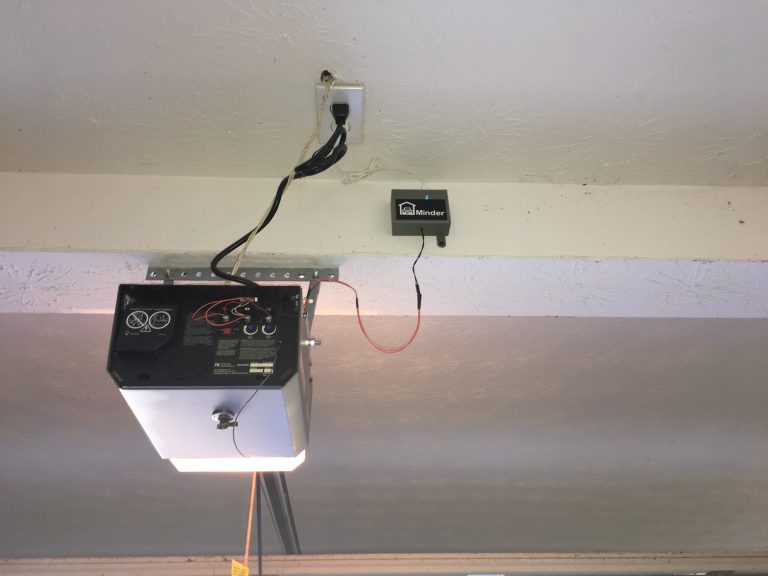
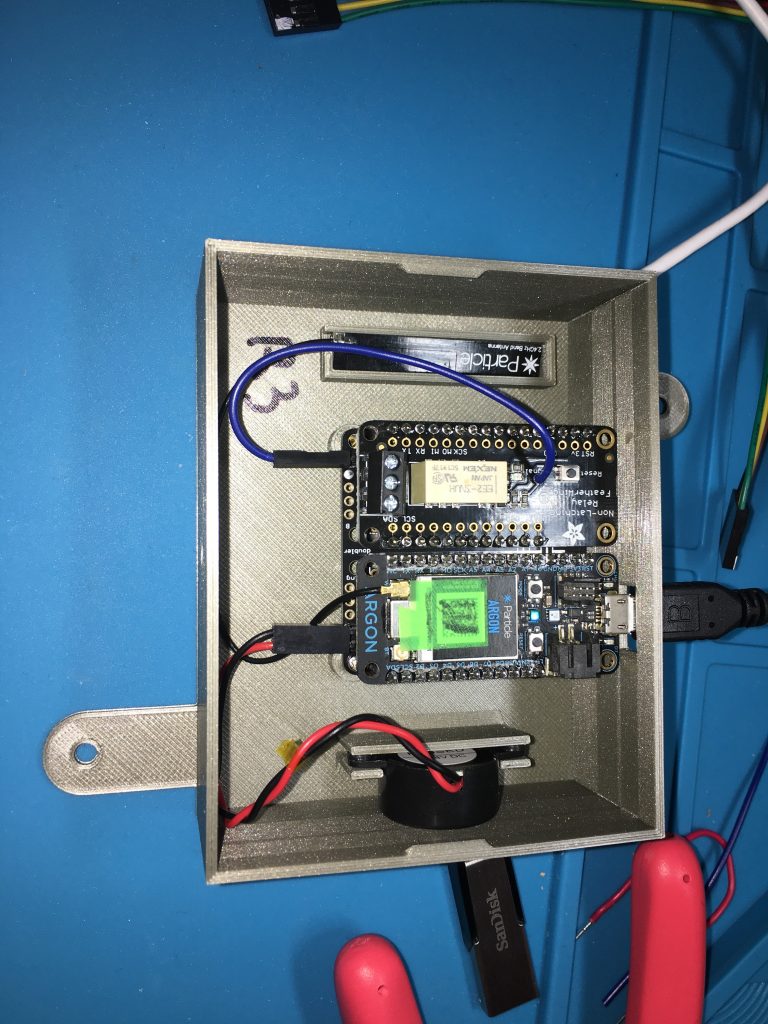
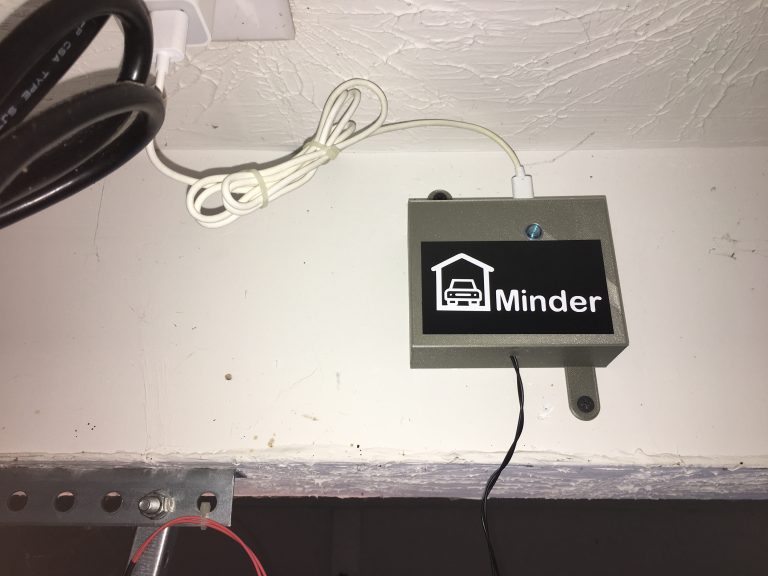
Alerts
I built logic in Node Red that sends an ALERT to my phone and my wife’s phone when the garage door has been open for more than 30 minutes. An added benefit of the Pushover IOS App is that it comes with Apple Watch support, so I get the alerts on my watch as well.
The Push Alert Service that I use is Pushover.net
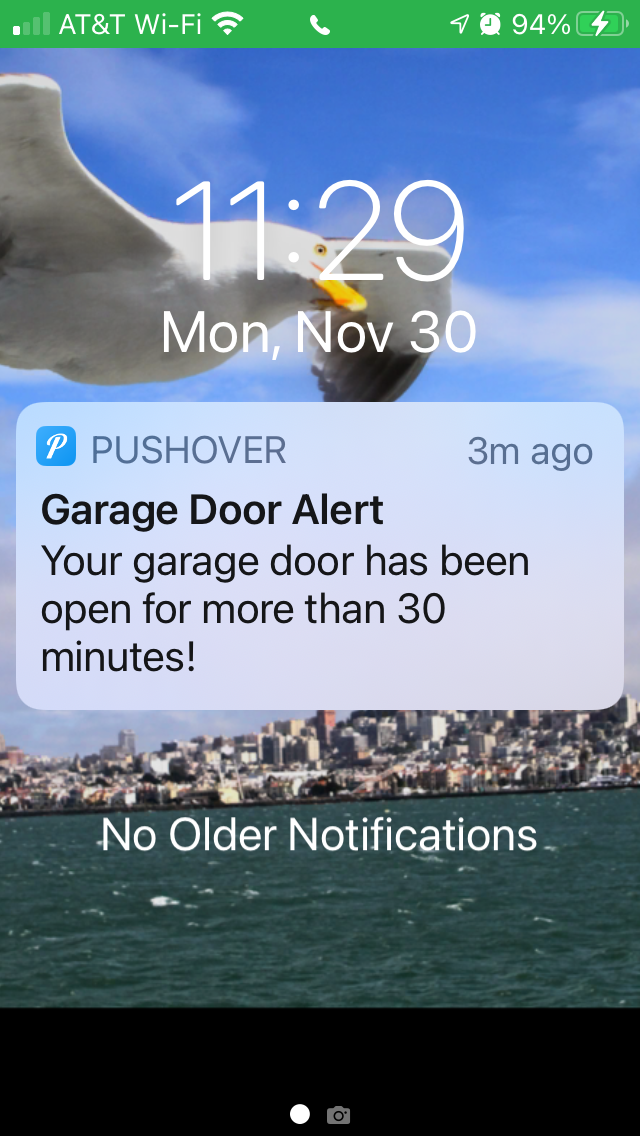
Project Summary
- Forgetting to close the garage door when leaving home is a true real world problem that we have experienced. In fact I’ve had neighbors to call me at work and say, ‘Hey, do you know your garage door has been open for about an hour with no cars at home?’ Wouldn’t have been great if I had an IOT device that warns me when the door has been open for 30 minutes or more?
- This was a simple project, but required two separate IOT devices. One to monitor the garage door at all times. The second device can send the appropriate signal to the existing garage door closer to force it to close the garage door.
- For this project, I chose to use the Particle Argon micro-controllers because of the added flexibility that Particle OTA flashing of firmware provides. There are pros and cons to using the Particle Eco-system as opposed to bare metal devices, namely cost, but I wanted to use Particle devices in a project and get more familiar with the capabilities and decide for myself whether the Particle Eco-system is a fit for my projects. The result: I was impressed by the Particle Device OS and eco-system and will certainly use Particle devices again especially for WiFi based projects.
- I took the suggestion of a friend and limited the control of the door to just closures from the Node Red dashboard. This intentional limitation is for security reasons.
- I feel like adding the clear lens over the micro-controller’s status LED is a nice addition. It provides some controller status/debug capabilities just at a glance.